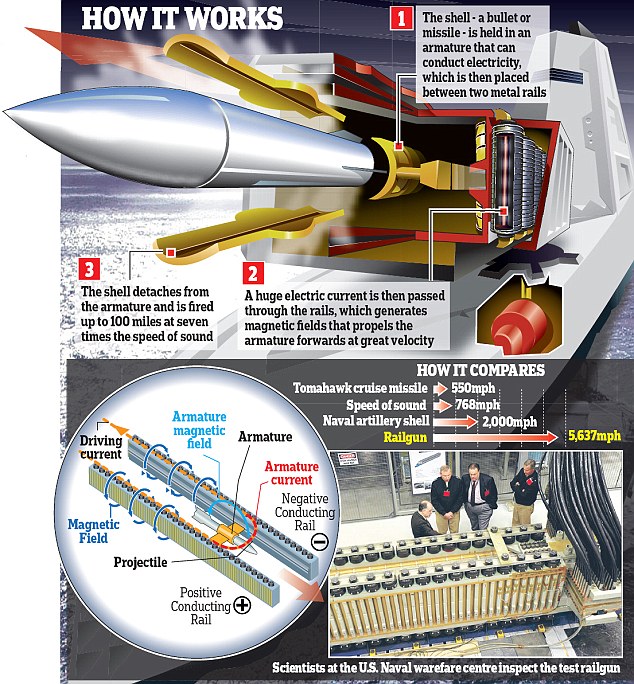

23, 2012, file photo provided by the U.S. Using electricity, a railgun can fire a projectile at six or seven times the speed of sound, creating enough energy to destroy targets.

The railgun held the possibility of providing an effective weapon at a much lower cost than smart bombs and missiles. The Navy spent about $500 million on research and development of the railgun, said Bryan Clark, a defense expert at the Hudson Institute.
#Railgun projectile free#
She told the AP that the Navy's decision will free up resources for hypersonic missiles, as well as lasers and other electronic warfare systems. Lieutenant Courtney Callaghan is a Navy spokesperson. In addition, the Navy likely recognized that hypersonic missiles have higher performing abilities than the railgun, he added. The halt in railgun development, Caris said, suggests that the Navy saw difficulties in implementing the technology. He told the AP that “the railgun is, for the moment, dead.” Matthew Caris is a defense expert with the private advisory company Avascent Group. military has been putting money into the development of hypersonic weapons in recent years in an effort to keep up with hypersonic military programs in China and Russia.

Navy, shows an electromagnetic railgun prototype launcher at the Naval Surface Warfare Center, Dahlgren Division test facility in Dahlgren, Va. In addition to flying at extremely high speeds, hypersonic weapons are designed to move in ways that make them difficult to find and destroy in flight. Hypersonic is a term that relates to speeds of more than five times the speed of sound, also known as Mach 5. Department of Defense turns its attention to the development of hypersonic missiles, The Associated Press reports. The move to cancel railgun development comes as the U.S. The report said the development also centered on possible use of the railgun as a missile defense system. The cannon-like railgun uses electricity instead of chemical substances to fire projectiles.Ī report released earlier this year by the Congressional Research Service stated that the Navy had been developing the railgun as a firing weapon to support U.S. The Navy spent more than 10 years developing the weapon, called an electromagnetic railgun. Navy is halting development of a high-tech weapon designed to fire projectiles at up to seven times the speed of sound.


 0 kommentar(er)
0 kommentar(er)
